Resnick & Halliday Solutions for Chapter: Equilibrium and Elasticity, Exercise 1: Problems
Resnick & Halliday Physics Solutions for Exercise - Resnick & Halliday Solutions for Chapter: Equilibrium and Elasticity, Exercise 1: Problems
Attempt the practice questions on Chapter 12: Equilibrium and Elasticity, Exercise 1: Problems with hints and solutions to strengthen your understanding. Principles Of Physics International Student Version solutions are prepared by Experienced Embibe Experts.
Questions from Resnick & Halliday Solutions for Chapter: Equilibrium and Elasticity, Exercise 1: Problems with Hints & Solutions
A uniform wood panel of mass is hinged vertically on a wall by two hinges, one from its top and the other from its bottom. The panel is tall and wide. A axis extends upward through the hinges and an axis extends outward along the panel's width. If each hinge supports half the panel's weight, what are the forces on the panel at (a) the top hinge and (b) the bottom hinge, both in unit vector notation?
In the figure shown below, uniform beams and are attached to a wall with hinges and loosely bolted together (there is no torque of one on the other). Beam has length and mass , and beam has mass . The two hinge points are separated by distance . In unit-vector notation, what is the force on (a) beam due to its hinge, (b) beam due to a bolt, (c) beam due to its hinge, and (d) beam due to the bolt?
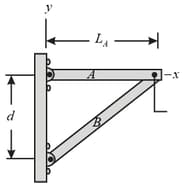
Figure below is an overhead view of a rigid rod that turns about a vertical axle until the identical rubber stoppers and are forced against rigid walls at distances from the axle. Initially the stoppers touch the walls without being compressed. Then force of magnitude is applied perpendicular to the rod at a distance from the axle. Find the magnitude of the force compressing (a) stopper and stopper .
For the stepladder shown in the figure, sides and are each long and hinged at . Bar is a tie-rod long, halfway up. A man weighing and height climbs along the ladder. Assuming that the floor is frictionless and neglecting the mass of the ladder, find (a) the tension in the tie-rod and the magnitudes of the forces on the ladder from the floor at (b) and (c) (Hint: Isolate the parts of the ladder in applying the equilibrium conditions)
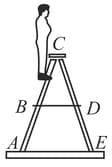
A tunnel of length , height and width (with a flat roof) is to be constructed at distance beneath the ground, as shown in the given figure. The tunnel roof is to be supported entirely by square steel columns, each with a cross-sectional area of . The mass of of the ground material is . (a) What is the total weight of the ground material the columns must support? (b) How many columns are needed to keep the compressive stress on each column at one-half its ultimate strength? (Breaking stress of steel )
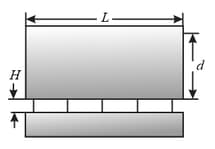
In the figure shown below, horizontal scaffold , with uniform mass and length hangs from horizontal scaffold , with uniform mass . A box of nails lies on scaffold , centered at distance from the left end. What is the tension in the cable indicated?
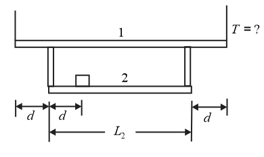
A physics Brady Bunch, whose weights, in , indicated in the figure given below, is balanced on a seesaw. What is the number of the person who causes the largest torque about the rotation axis at fulcrum , directed (a) out of the page and (b) into the page?
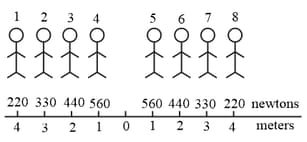
A bowler holds a bowling ball in the palm of his hand, as shown in the given figure. His upper arm is vertical, his lower arm () is horizontal. What is the magnitude of (a) the force of the biceps muscle on the lower arm and (b) the force between the bony structures at the elbow contact point?


